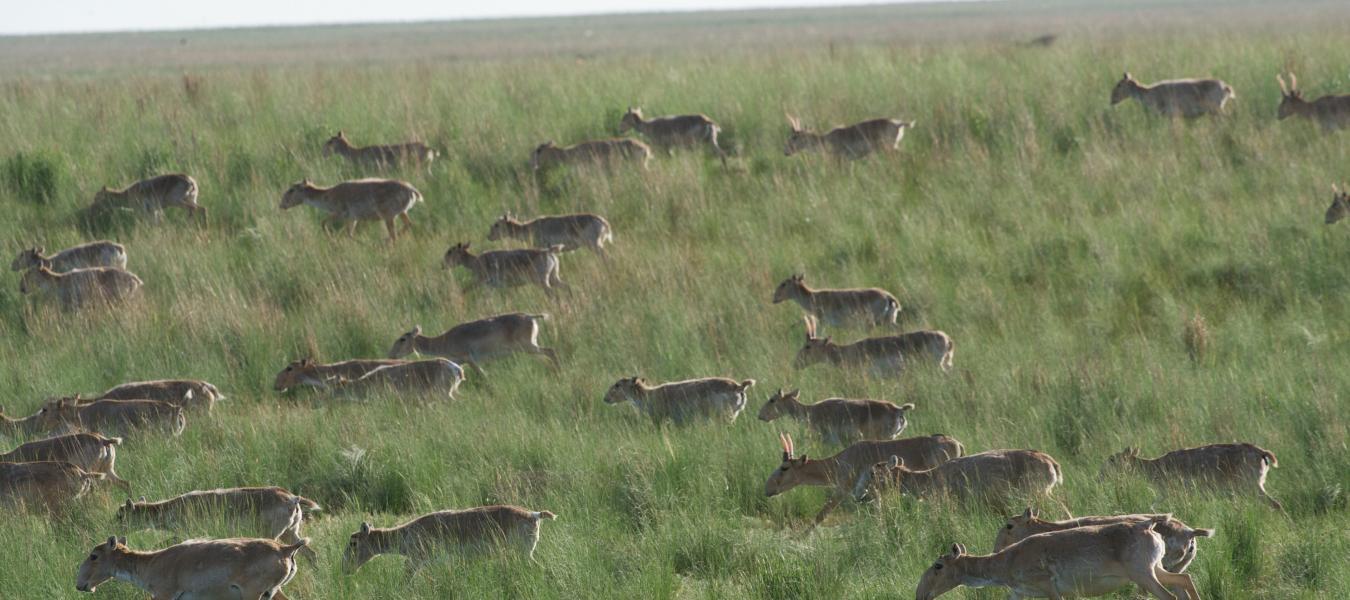Infectious Diseases of Saiga Antelopes and Domestic Livestock in Kazakhstan (PhD thesis)

This thesis combines an investigation of the ecology of a wild ungulate, the saiga antelope (Saiga tatarica, Pallas), with epidemiological work on the diseases that this species shares with domestic livestock. The main focus is on foot-and-mouth disease (FMD) and brucellosis. The area of study was Kazakhstan (located in Central Asia, Figure 1.1), home to the largest population of saiga antelope in the world (Bekenov et al., 1998). Kazakhstan's independence from the Soviet Union in 1991 led to a dramatic economic decline, accompanied by a massive reduction in livestock numbers and a virtual collapse in veterinary services (Goskomstat, 1996; Morin, 1998a).
As the rural economy has disintegrated, the saiga has suffered a dramatic increase in poaching (Bekenov et al., 1998). Thus the investigation reported in this thesis includes ecological, epidemiological and socio-economic aspects, all of which were necessary in order to gain a full picture of the dynamics of the infectious diseases of saigas and livestock in Kazakhstan.
